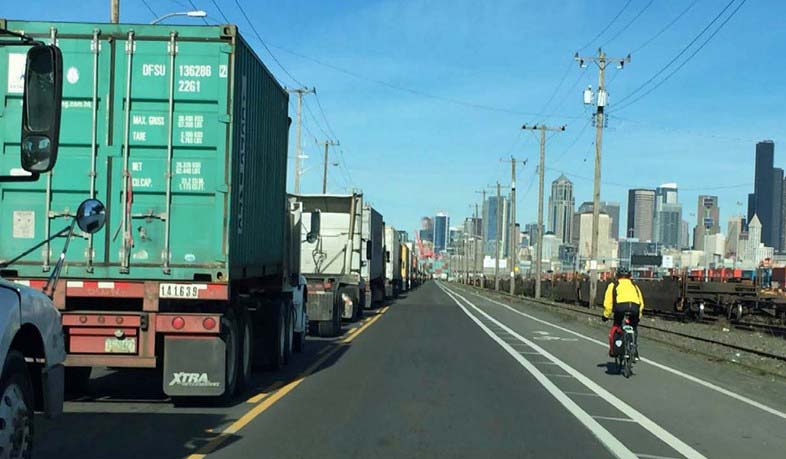Seattle ranks as the nation’s sixth-fastest growing city and is also among the nation’s densest. As the city grows, so do truck volumes tied to the economic growth of Seattle and the region. But many streets are already at capacity during peak hours, and bottlenecks are worsening. This project was designed to deliver crucial granular baseline data on commercial vehicle movements in two key areas of Seattle to help city transportation professionals plan for increasing goods movement and service activities.
This research by the University of Washington’s Supply Chain Transportation and Logistics Center (SCTL) produced Seattle’s first complete estimate of Greater Downtown area traffic volumes. And it offered a detailed analysis of commercial vehicle traffic in and around one of the city’s major industrial centers, the Ballard-Interbay Northern Manufacturing Industrial Center.
The researchers used FHWA’s vehicle classification system and an additional large vehicle classification framework developed previously for Seattle to track traffic in and out of 39 entry/exit points to determine which gateways are used by which truck types, determine the volumes of trucks at different times of day, and estimate and compare the numbers of inbound and outbound trucks.
For the Greater Downtown area, the cordon counts and traffic volume estimates provided powerful data for the city to use in modeling, evaluating, and refining transportation planning policies. This study laid the groundwork for the first commercial vehicle traffic model that will enable planners to evaluate different freight planning and traffic management strategies, economic growth scenarios, and application of new freight vehicle technologies. Ballard-Interbay is slated for major infrastructure projects in the coming years, including new Sound Transit stations and critical bridge replacements. This analysis will help inform those projects.
One important finding was that volumes of smaller commercial vehicles (such as pick-ups, vans, and step vans) were significant in both the Greater Downtown and Ballard-Interbay areas, representing more than half of all observed commercial vehicles. Among those smaller commercial vehicles, service vehicles constituted a significant share. Among the many possible implications of this finding is the impact on parking. An earlier SCTL project found that service vehicles tend to park for longer periods, with nearly half of observed service vehicles parked for more than 30 minutes and a quarter parked for an hour or more. This means that these vehicles may have a disproportionate impact on parking space rates at the curb.
The researchers also concluded that Seattle should consider adopting a standard freight-data reporting system that would emphasize collecting and distributing richer, more robust data for time-series analyses and other freight forecasting. Currently, urban traffic volume estimates by the Seattle Department of Transportation, Washington State DOT, and Puget Sound Regional Council do not produce enough spatial and vehicular detail to understand Seattle’s vehicle movements or connect them with economic activity. This study offered a critical snapshot of the detailed data needed for effective policy and planning, potentially informing everything from road maintenance and traffic signals to electric vehicle charging station sites and possible proposals for congestion pricing.
Authors
Gabriela Giron-Valderrama
Anne Goodchild
UW Department of Civil and Environmental Engineering
Sponsor: Seattle Department of Transportation
SDOT Project Manager: Venu Nemani

